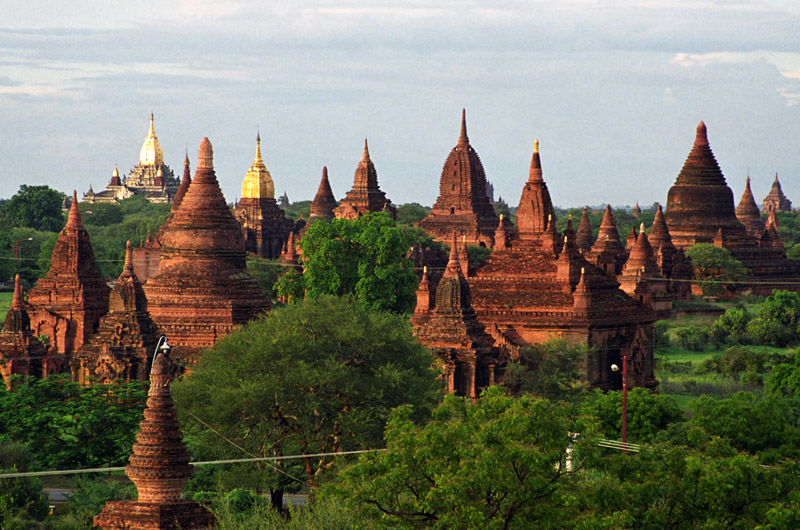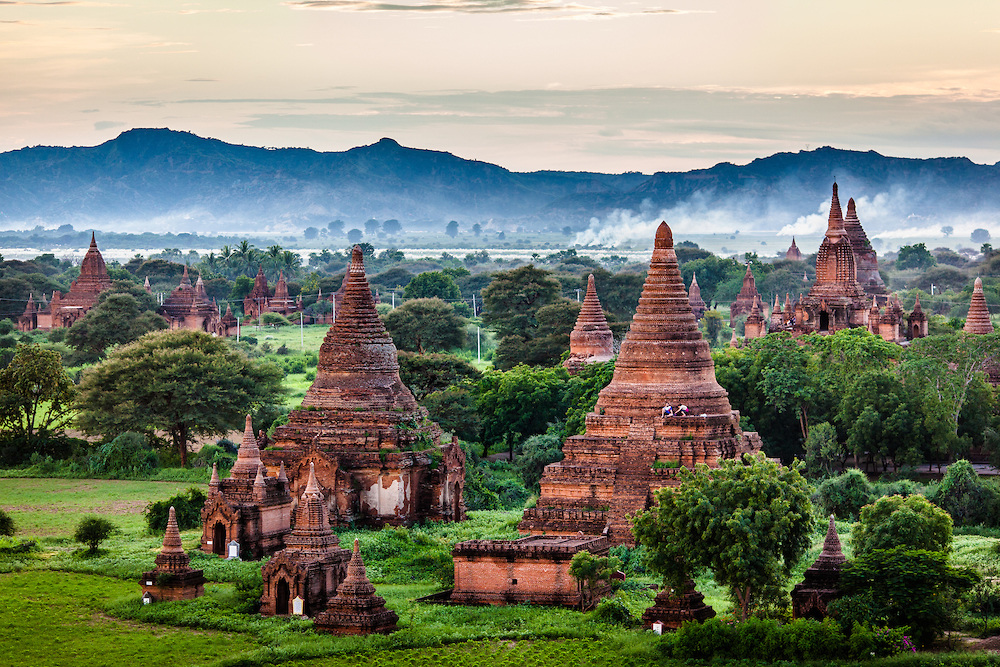
|
History of Bagan
According to the Burmese chronicles, Bagan was founded in the second century CE, and fortified in 849 CE by King Pyinbya,
34th successor of the founder of early Bagan.[4] Mainstream scholarship however holds that Bagan
was founded in the mid-to-late 9th century by the Mranma (Burmans), who had recently entered the
Irrawaddy valley from the Nanzhao Kingdom. It was among several competing Pyu city-states until the
late 10th century when the Burman settlement grew in authority and grandeur.[5] From 1044 to 1287,
Bagan was the capital as well as the political, economic and cultural nerve center of the Pagan Empire.
Over the course of 250 years, Bagan's rulers and their wealthy subjects constructed over 10,000 religious
monuments (approximately 1000 stupas, 10,000 small temples and 3000 monasteries)[6] in an area of
104 square kilometres (40 sq mi) in the Bagan plains. The prosperous city grew in size and grandeur,
and became a cosmopolitan center for religious and secular studies, specializing in Pali scholarship
in grammar and philosophical-psychological (abhidhamma) studies as well as works in a variety of
languages on prosody, phonology, grammar, astrology, alchemy, medicine, and legal studies.[7] The
city attracted monks and students from as far as India, Ceylon as well as the Khmer Empire. The culture
of Bagan was dominated by religion. The religion of Bagan was fluid, syncretic and by later standards,
unorthodox. It was largely a continuation of religious trends in the Pyu era where Theravada Buddhism
co-existed with Mahayana Buddhism, Tantric Buddhism, various Hindu (Saivite, and Vaishana) schools
as well as native animist (nat) traditions. While the royal patronage of Theravada Buddhism since
the mid-11th century had enabled the Buddhist school to gradually gain primacy, other traditions
continued to thrive throughout the Pagan period to degrees later unseen.[7] The Pagan Empire collapsed
in 1287 due to repeated Mongol invasions (1277–1301). Recent research shows that Mongol armies may
not have reached Bagan itself, and that even if they did, the damage they inflicted was probably
minimal.[8] However, the damage had already been done. The city, once home to some 50,000 to 200,000
people, had been reduced to a small town, never to regain its preeminence. The city formally ceased
to be the capital of Burma in December 1297 when the Myinsaing Kingdom became the new power in Upper
Burma.
|


